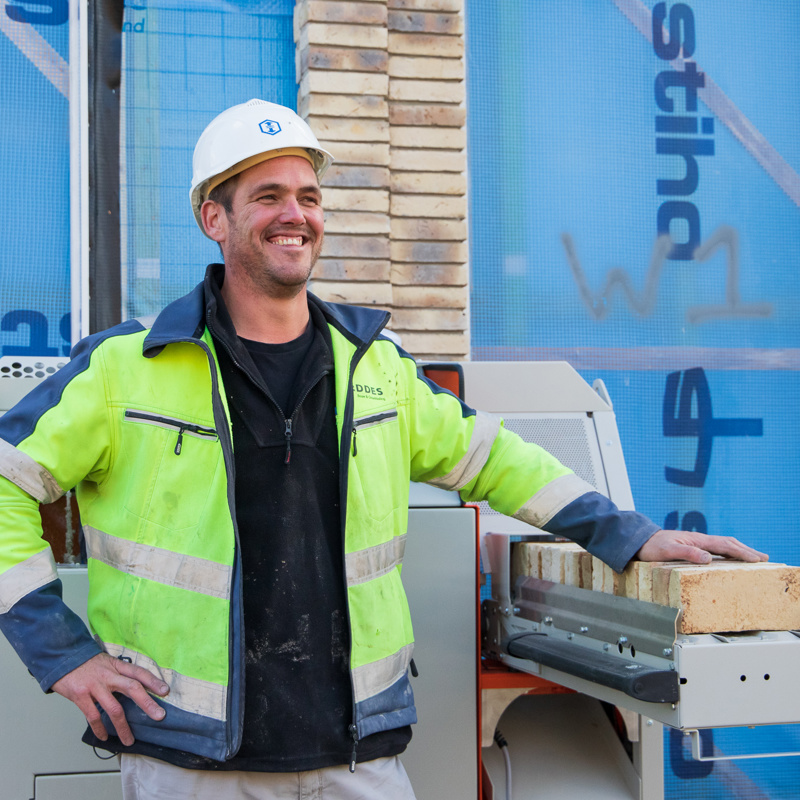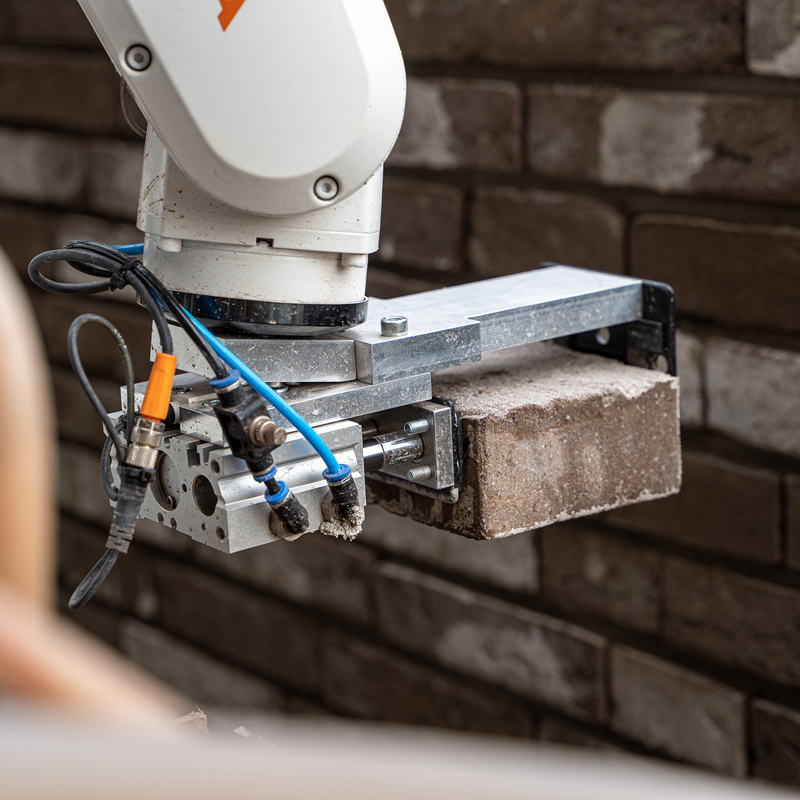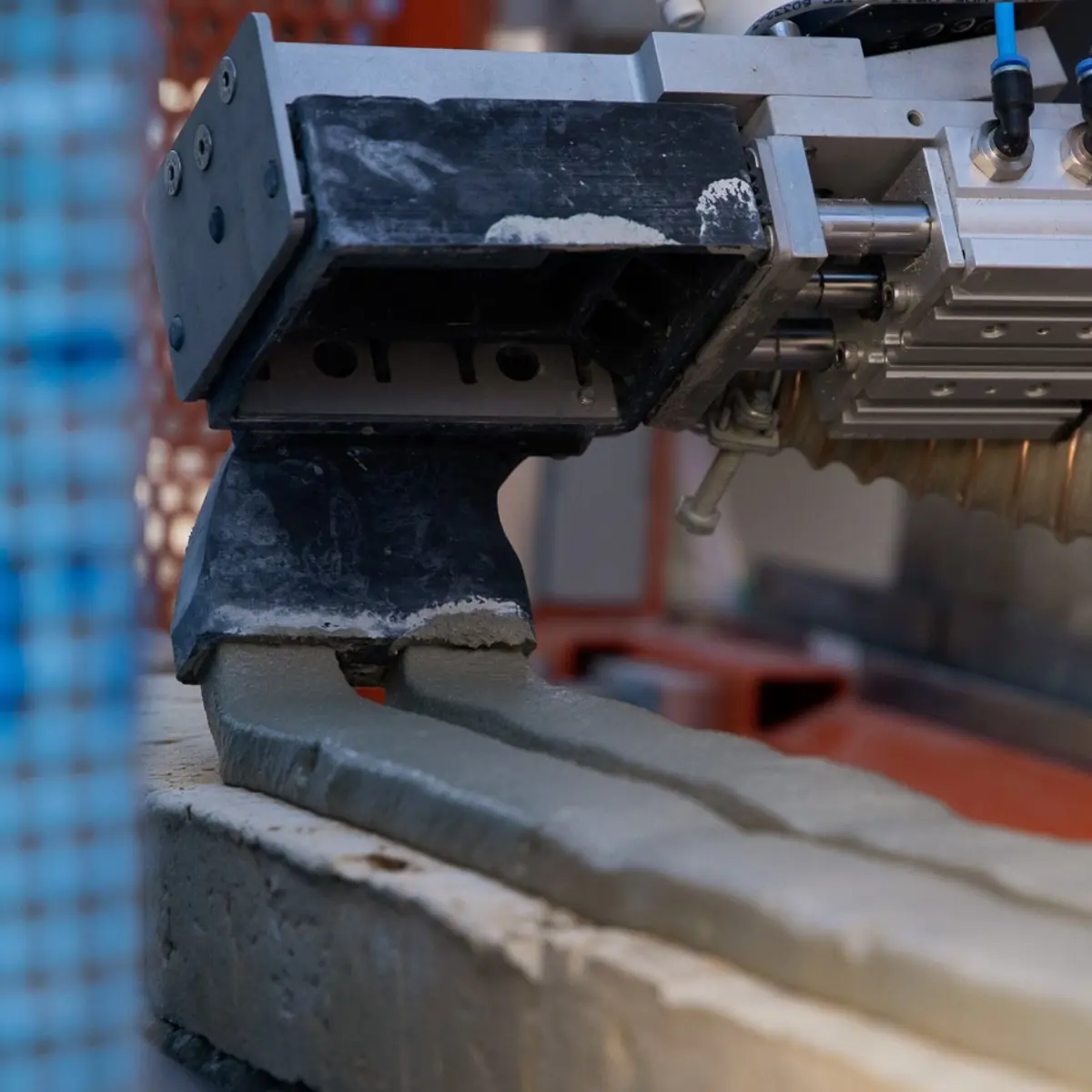Ballast Nedam launches bricklaying robot (with real brickwork)
17/05/2022

Applying mortar, cutting bricks to size and laying bricks in place: the brand new bricklaying robot is putting in a lot of flying hours. The developments? They go fast. By now, enough knowledge and experience has been gained and the robot is ready for the construction site.
Within 15 minutes, the robot measures a facade and knows exactly how to level the masonry, even if the lifting scaffold wobbles. So a façade no longer needs to be physically measured and adjustment profiles are no longer needed. This saves one working day per façade. Currently, the focus is on quality and stable production. After that, we will work with ROPAX towards a production of 1,600 bricks per day.
During a working day, the robot makes metres in production bricklaying, while the bricklayers can do what they enjoy: engage in the challenging part of their craft, such as bricklaying detail work. This creates a unique collaboration between man and machine.


After months of testing and improvement, the production version is now ready. Bricklayer Bas Meerwijk of Heddes Bouw & Ontwikkeling, part of Ballast Nedam, knows the robot inside out by now. He has already laid more than 60,000 bricks with this new, modern colleague. And most of this is done in Berkhout, North Holland, at Heddes' yard. Here, Bas has all the space he needs to test and improve.
"It's actually an apprentice bricklayer," he smiles. "As a bricklayer, it takes years before you have encountered all situations. Every site and every structure is different. The same applies to a robot like this. For example, it bricks different masonry patterns and on different surfaces, such as sandy soil and uneven asphalt. We also practise with different types of bricks: from exceptionally hard to soft."
Bas says: "When something goes differently than expected, I discuss it with the ROPAX developers. I then send the log files (points for improvement, ed.) and the software is adjusted. The next day, the robot has had an update and has improved a little further."
The robot bricklaying is more sustainable than traditionally common. Bas explains: "Because the mortar is applied very precisely and dosed, the robot uses 455 grams per brick. A bricklayer normally uses about 1,000 grams for this. That makes quite a difference!"

Meanwhile, the production version is ready and the masonry robot is being prepared for its first job: masonry work at a Ballast Nedam West project. Bas says: "On the construction site, the robot will definitely encounter new challenges that we could not take into account at the moment. So we will continue to optimise it."
Besides Heddes Bouw & Ontwikkeling and Ballast Nedam West, Laudy Bouw & Ontwikkeling is also getting ready for its first working days with the masonry robot. Bas is taking charge of knowledge sharing and training Dennis Diederen, bricklayer at Laudy. Dennis is enthusiastic: "It takes some getting used to having a robot take over your work, but I definitely see the added value of this. My father also worked at Laudy and the heavy work caused him a lot of physical complaints. If I can work with a robot as a bricklayer, I can keep working longer. This is really a godsend for our profession."
Dennis has been apprenticed to Bas for a few days and is now well versed with the robot. "I was amazed at how simple it works," he says. "That is exactly its strength: as a construction sector, we need to start surrendering to technology. The work could be easier."